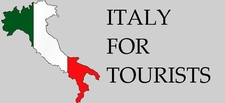Venice
“To build a city where it is impossible to build a city is madness in itself, but to build there one of the most elegant and grandest of cities is the madness of genius.” – Alexander Herzen, Russian writer
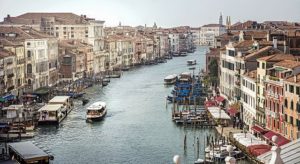 Nestled in the northeastern corner of Italy, Venice is one of the most unique cities in the world. Composed of more than 100 islands, the city is interconnected by 150 canals and nearly 400 bridges. It is built on water, and travel depends largely on boats and gondolas. You will hardly find any cars in this majestic masterpiece of a metropolis.
Nestled in the northeastern corner of Italy, Venice is one of the most unique cities in the world. Composed of more than 100 islands, the city is interconnected by 150 canals and nearly 400 bridges. It is built on water, and travel depends largely on boats and gondolas. You will hardly find any cars in this majestic masterpiece of a metropolis.
Once a maritime and financial powerhouse during the Middle Ages and Renaissance, Venice is now a tourist paradise. It’s captivating. It’s romantic. Venice is simply marvelous. The winding narrow streets and alleys will present a challenge, but they’re your opportunity to engage with the things that make Venice so special.
Get Lost!
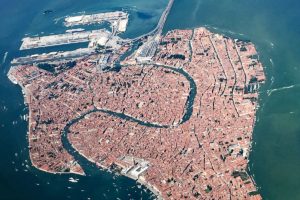 No, this doesn’t mean to go away and never come back! Venice is a maze, and even the most expert of navigators will have some trouble finding their way around. But don’t sweat it; just enjoy it! You’ll inevitably visit the nooks and crannies and pass through the many shops, bakeries, cafes, specialty stores and gorgeous cites that give this city its charm.\
No, this doesn’t mean to go away and never come back! Venice is a maze, and even the most expert of navigators will have some trouble finding their way around. But don’t sweat it; just enjoy it! You’ll inevitably visit the nooks and crannies and pass through the many shops, bakeries, cafes, specialty stores and gorgeous cites that give this city its charm.\
… And Make Your Way to St. Mark’s Square
Or Piazza San Marco, as the locals call it.
Farther south in Italy, they say all roads lead to Rome. In Venice, all passages lead to St. Mark’s Square.
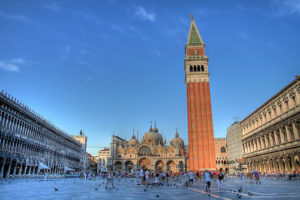 After conquering the maze, you’ll end up in one of the grandest squares in all of Europe. Standing tall is the bell tower – St. Mark’s Campanile (with breathtaking views from the top!). Cafes and restaurants line the edges of the piazza, and classical orchestras will set a romantic mood in the open air. On the eastern edge you’ll see St. Mark’s Basilica, one of the greatest examples of Byzantine architecture. To the southeast is Doge’s Palace, representing the city’s Gothic style. Look farther south and you’ll see the Grand Canal, the major traffic corridor of Venice. Gorgeous sites all around… A splendid experience indeed!
After conquering the maze, you’ll end up in one of the grandest squares in all of Europe. Standing tall is the bell tower – St. Mark’s Campanile (with breathtaking views from the top!). Cafes and restaurants line the edges of the piazza, and classical orchestras will set a romantic mood in the open air. On the eastern edge you’ll see St. Mark’s Basilica, one of the greatest examples of Byzantine architecture. To the southeast is Doge’s Palace, representing the city’s Gothic style. Look farther south and you’ll see the Grand Canal, the major traffic corridor of Venice. Gorgeous sites all around… A splendid experience indeed!
Take a Gondola Ride
What visit to Venice would be complete without a gondola ride? Yeah, you’ve seen gondolas on television and glossy travel magazines. But you’re now here, and it’s time to experience the ride for yourself. There are many in Venice, especially along the Grand Canal, with a popular boarding area just outside St. Mark’s Square.
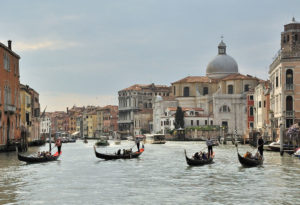 Sit in one of the comfortable seats. The gondoliers (the ones who steer the boats) will take care of you. Some will even sing a romantic tune or two. The gondolas have no motors and are steered by oars. But why hurry? This is one of the greatest experiences that you’ll have on your travels, so take your time!
Sit in one of the comfortable seats. The gondoliers (the ones who steer the boats) will take care of you. Some will even sing a romantic tune or two. The gondolas have no motors and are steered by oars. But why hurry? This is one of the greatest experiences that you’ll have on your travels, so take your time!
Doge’s Palace (or Palazzo Ducale)
This Gothic structure was once home to the power Doges, who ruled the Venetian Empire from 697 to 1797… or 1,100 years! For about 400 years, the palace controlled the most important trade and commercial transactions in the Mediterranean. The palace is a symbol of Venice’s magnificent past and artistic splendor. The opulent passageways and impressive courtyard are only a few of the characteristics that will leave you mesmerized.
Teatro La Fenice
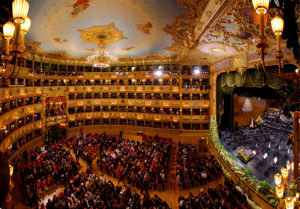 There are many opera houses in Italy, but few are as impressive as the Teatro La Fenice in Venice. Even if you’re not the opera type, the building’s creative architecture and furnishings will leave you impressed. Built in 1792, the building has been burned down twice, but restoration projects have kept it a major attraction. One of the most recent projects began in 2001, and today Teatro La Fenice remains a site of opera world premiers.
There are many opera houses in Italy, but few are as impressive as the Teatro La Fenice in Venice. Even if you’re not the opera type, the building’s creative architecture and furnishings will leave you impressed. Built in 1792, the building has been burned down twice, but restoration projects have kept it a major attraction. One of the most recent projects began in 2001, and today Teatro La Fenice remains a site of opera world premiers.
Baccala Mantecato
Baccala mantecato is one of the most typical dishes in Venice. This antipasto is creamed-dried cod prepared by poaching and blending fish into a mousse that is seasoned with salt, pepper and olive oil. When ready, it is served on small bread slices or grilled polenta.
Risi i Bisi
This name of this rhyming food rolls of the tongue, but this dish itself isn’t complicated. Simply translated, it’s rice and peas, but in a very thick soup. So thick, in fact, that you can probably eat it with a fork instead of a spoon. It is traditionally made on April 25 of each year to celebrate the feast of San Marco.
Sarde in Saor
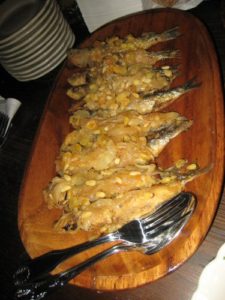 Translated as “sweet and sour sardines,” sarde in saor features onions, raisins and pine nuts. It originated among fishermen who used vinegar to preserve fish, but remains one of Venice’s most characteristic dishes to this day.
Translated as “sweet and sour sardines,” sarde in saor features onions, raisins and pine nuts. It originated among fishermen who used vinegar to preserve fish, but remains one of Venice’s most characteristic dishes to this day.


